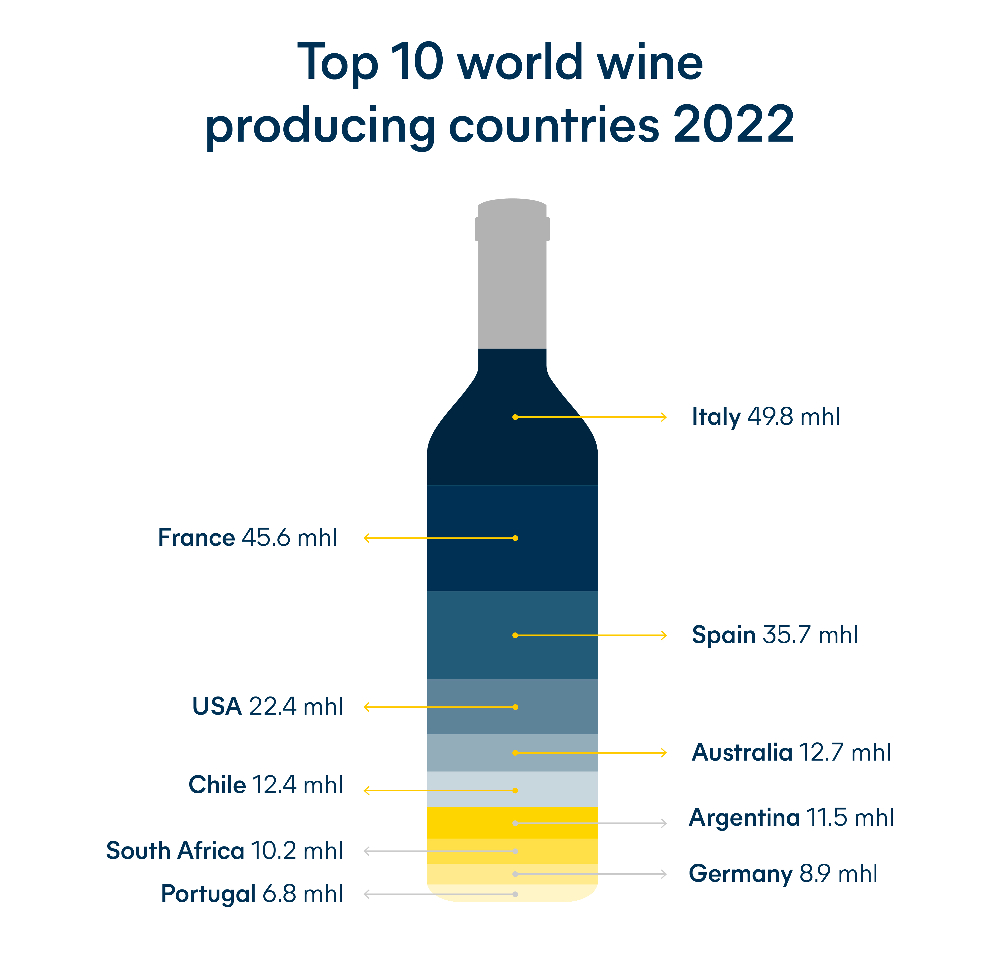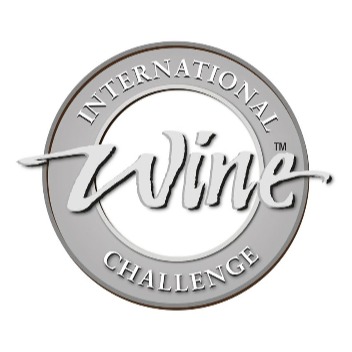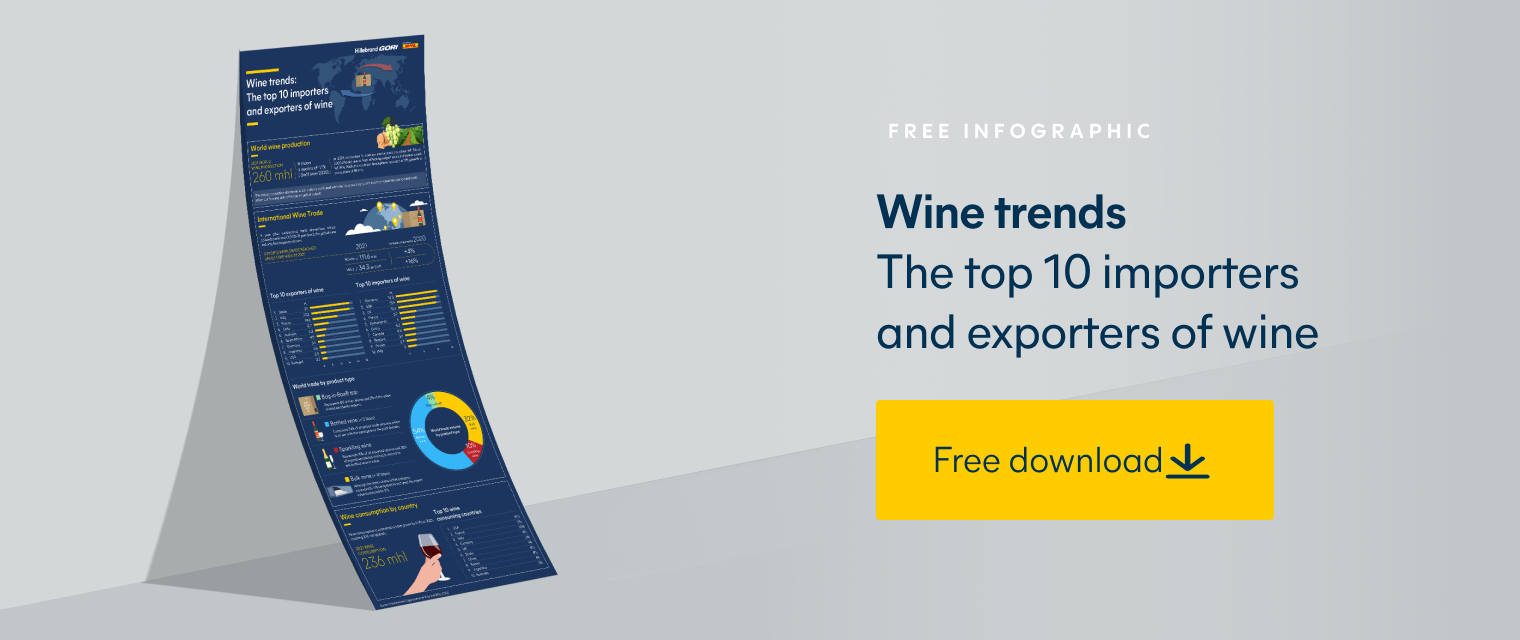Explore the World's Top Wine Regions
Wine regions have long been used to characterize wines from a specific place. In fact one of the oldest demarcated wine regions, in Portugal’s Port-producing Douro Valley, was established in 1757.
Influenced by climate, soil conditions and local winemaking traditions, wines from wine regions are sought after worldwide for their unique character that can be found nowhere else. However, the concept of a wine region can be a little unclear, often intertwined with local, sometimes ancient, terminology that can confuse those unfamiliar with that particular wine region. In this article, we will cover everything you need to know about the world’s most famous wine regions, and how the unique wines produced there reach wine connoisseurs around the world.
What's a wine region?
Just 10 countries produce over 80% of the wine available today, and the wine production in these countries is concentrated in particular areas, known as wine regions. From Bordeaux in France to Margaret River in Australia, the names of wine regions are synonymous with famous wines around the world.
Wine produced in one region has a unique character. Tuscany, for example, is a wine region famous globally for its Sangiovese-based dry red wines, including Chianti, Brunello di Montalcino and Vino Nobile di Montepulciano. In some cases, a wine region is governed by a set of rules that specifies the grape varieties, vineyard location and some aspects of the winemaking process. The French AOC system (Appellation d'Origine Contrôlée) is one such example that is well-known for its strict regulations that define and protect the unique characteristics of specific wine regions. The AOC system is just one way of geographically organizing wine, but there are others you may come across.
How many wine regions are there?
There are hundreds of wine regions around the world, many nested within larger wine regions. In Italy alone, there are 20 wine regions, with over 500 native grape varieties. The 11 major regions in France each contain further smaller wine regions.
What is the difference between a wine region, appellation and terroir?
While a wine region can produce wines of a specific character, the properties of even smaller areas are also said to influence the wine that is produced there. The terms ‘terroir’, ‘appellation’ and ‘AVA’ all allude to these areas, but how do they differ?
Terroir
Terroir is a term derived from the French word for earth, ‘terre’, and broadly refers to ‘a sense of place’. It expresses the idea that a wine’s character is influenced by where its grapes were grown, including the local soil, climate, topography and even bacteria in a specific site.
Appellation
In France, wine regions are legally defined areas under the AOC system, but appellations are used all over Europe as well. The appellation on the label of a bottle of wine tells consumers where the grape was grown, the grapes used, and how the wine was made.. For example, Margaux AOC wine from the Bordeaux region, red wine production, is predominantly made from Cabernet Sauvignon with varying proportions of Merlot, Cabernet Franc or Malbec.
Smaller appellations can exist within larger ones, for example the Pauillac appellation sits within the wider Bordeaux appellation.
AVA
An American Viticultural Area (AVA) is a system used in the US that works much like an appellation. An AVA has an agreed boundary, and is distinct in its terrain, soil and climate. Unlike an appellation, an AVA doesn’t specify what types of grapes can be grown there or how the wine should be made.
What are the main wine producing countries?
According to the International Organisation of Vine and Wine (OIV), the top 10 wine producing countries in the world in terms of volume in 2022 were:
- Italy 49.8 mhl
- France 45.6 mhl
- Spain 35.7 mhl
- USA 22.4 mhl
- Australia 12.7 mhl
- Chile 12.4 mhl
- Argentina 11.5 mhl
- South Africa 10.2 mhl
- Germany 8.9 mhl
- Portugal 6.8 mhl
Together, these countries produce a staggering 83.6% of the world’s wine total volume. Each of these countries has famous wine regions, known for wines made from local grapes found nowhere else, or with a unique character derived from the characteristics of the land itself.

Let’s take a closer look at the famous wine regions in the top four wine producing countries that you should know about:
Italy
Italy alone produces over 19% of the world’s wine each year, from many famous wine regions. Italian wines use the term “Classico” on labels to delineate the original boundaries of a wine region. Wine regions in Italy can be broadly divided into the Northwest, Northeast, Central, and Southern Italy, and each contains multiple famous wine regions. The Northwest, for example, contains the Lombardy, Piedmont, Liguria and Aosta Valley wine regions, all with moderately cool climates and a shorter season that produces aromatic red wines and acidic whites. Meanwhile in Southern Italy, the volcanic soils of the Campania and Basilicata wine regions are home to the rare Aglianico grape, which produces bold savory wines.
France
Some of the most popular wine regions in France, and the world, are the Bordeaux, Bourgogne, Côte du Rhône, Vallée du Loire, Champagne, Provence and Alsace regions. Although it’s hard to single out a wine region in France as the most famous, Bourgogne is certainly worth a closer look. It’s one of the most famous wine regions in the world, and one of the most expensive, creating premium red and white wines with unique and varied characters thanks to the region’s microclimates. The grapes from Bourgogne are unique too: a red burgundy is made from Pinot Noir grapes, the world’s most popular light-bodied red wine, and white burgundy is made from Chardonnay grapes.
Spain
With the largest vineyard surface in the world, and more than 100 Denominaciones de Origen (DO’s, a type of appellation) including Balearic or Canary Islands, Spanish wine regions produce varied wines famous around the world. Spain’s top wine producing regions include Andalucia (famous for its sherry and fortified wines) and Rias Baixas in the Northwest (famous for producing fresh fruity Albariño wines). Catalonia too is famous for the Cava it produces with traditional methods, enjoyed worldwide.
However, it is Rioja in northern Spain that is perhaps best known to foreign wine consumers, and is Spain’s main wine producing region. As in many Spanish DO’s, Rioja’s labels organise wine from this region into tiers: Crianza, Reserva, and Gran Reserva (ordered by years of aging of each wine before they are released to the market).
Preserving wine quality along the transport route
Wine transport options need to be flexible and tailored to suit the needs of the varying degree of sensitivity different wines have. Choosing the correct shipping container is an important part of preserving the quality of your wine during transit. Insulated containers protect against thermal shocks and humidity, as well as contamination from outside odours thanks to their airtight seal. Refrigerated or reefer containers are another option, and offer to-the-degree control of the temperature that your wine is exposed to inside the container. Our experts can help you find the right solution for your needs, contact us to find out more.
Published 30th June 2023, updated 7th April 2024
Climate affects grape ripeness and flavor profiles. For example, cooler climates produce wines with higher acidity, while warmer climates lead to riper grapes with more pronounced fruit flavors and less acidity.
Wine subregions are smaller areas within a larger wine region that have distinct characteristics and produce unique wines. These subregions may differ in climate, soil composition, grape varieties grown and winemaking techniques used. They offer more specific information about the wine’s origin and can help you better understand its taste profile. Some examples of famous subregions include Chianti in Tuscany and Barolo in Piedmont.
Subregions can have unique soil types, microclimates and topography that contribute to the wine’s flavor profile. This is why wines from subregions within a larger region may have distinct characteristics even if made from the same grape varietal.
The AVA is a system used in the United States to designate specific wine-growing regions. It differs from the European appellation system in that crop yields, grape varietals grown or winemaking methods don’t factor into the classification.

How can we help your business grow?




